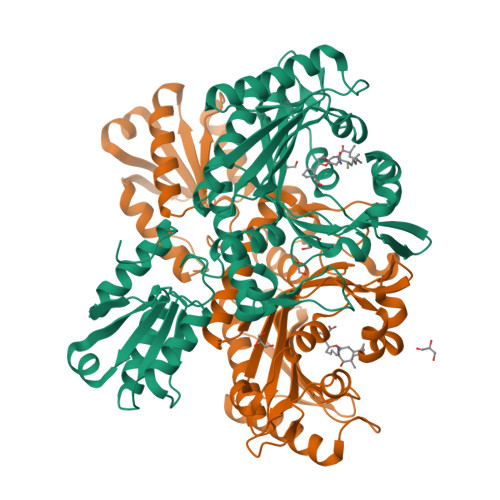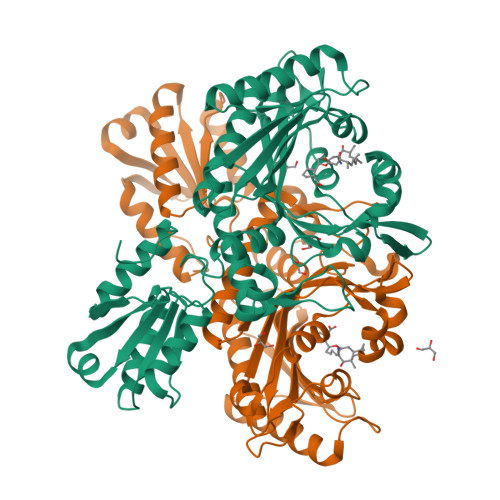Structural basis for full-spectrum inhibition of translational functions on a tRNA synthetase.
Fang, P., Yu, X., Jeong, S.J., Mirando, A., Chen, K., Chen, X., Kim, S., Francklyn, C.S., Guo, M.(2015) Nat Commun 6: 6402-6402
- PubMed: 25824639
- DOI: https://doi.org/10.1038/ncomms7402
- Primary Citation of Related Structures:
4P3N, 4P3O, 4P3P - PubMed Abstract:
The polyketide natural product borrelidin displays antibacterial, antifungal, antimalarial, anticancer, insecticidal and herbicidal activities through the selective inhibition of threonyl-tRNA synthetase (ThrRS). How borrelidin simultaneously attenuates bacterial growth and suppresses a variety of infections in plants and animals is not known. Here we show, using X-ray crystal structures and functional analyses, that a single molecule of borrelidin simultaneously occupies four distinct subsites within the catalytic domain of bacterial and human ThrRSs. These include the three substrate-binding sites for amino acid, ATP and tRNA associated with aminoacylation, and a fourth 'orthogonal' subsite created as a consequence of binding. Thus, borrelidin competes with all three aminoacylation substrates, providing a potent and redundant mechanism to inhibit ThrRS during protein synthesis. These results highlight a surprising natural design to achieve the quadrivalent inhibition of translation through a highly conserved family of enzymes.
Organizational Affiliation:
Department of Cancer Biology, Scripps Research Institute, Scripps Florida, 130 Scripps Way, Jupiter, Florida 33458, USA.





















